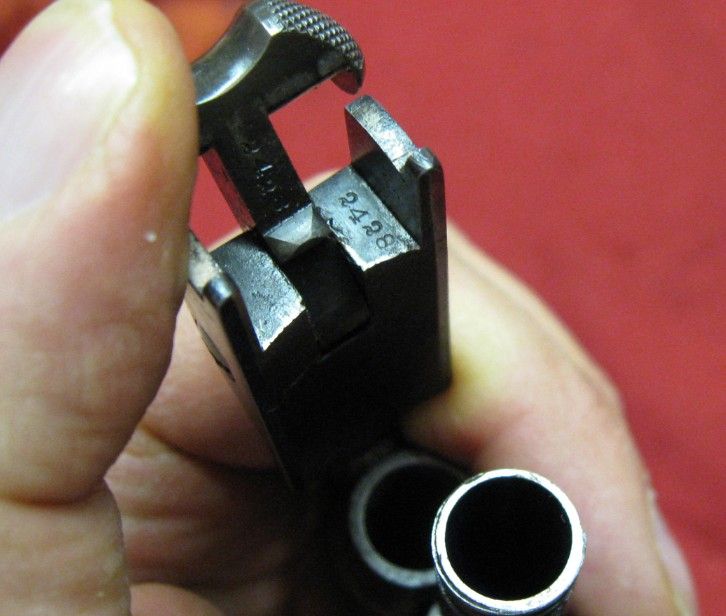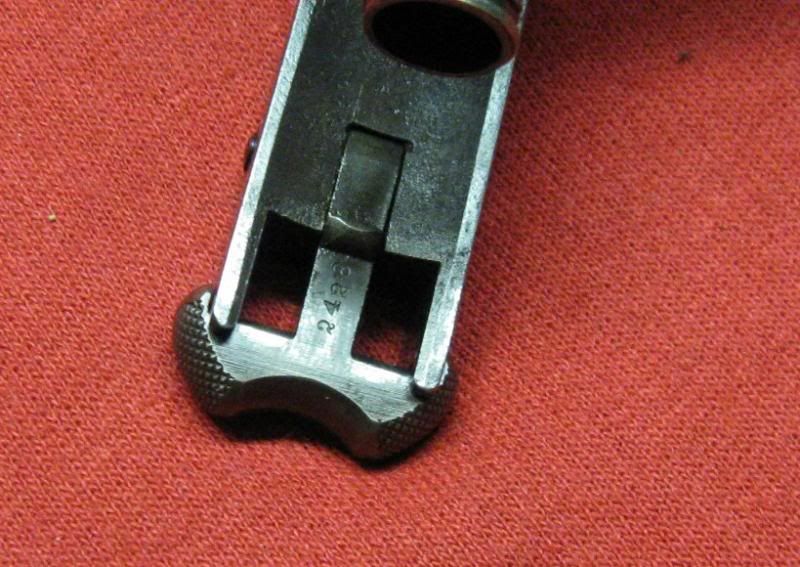Driftwood Johnson
New member
Interesting information from both of you and others as well. It does have an 1 7/16" cylinder with one shoulder about 2/3 into the cyl. Another thing I found was the serial # of the pistol is 23568 and the serial # of the cylinder is 26568, the last 3 digits being the same. Does this mean the cylinder has been changed and the numbers being a coincidence or would this pistol have had two cylinders for it? Am I correct in saying this revolver is a new model 3 double action .44 Russian or am I still confused?
Regarding the different SNs on frame and cylinder. That sounds like too much of a coincidence that they only vary by one character. I suggest you check again under some magnification and see if the second character in each is actually the same. Sometimes it is easy to mistake a 3 for a 6.
OK, let's back up for a minute. It looked like the third photo I posted, correct? If so it is a 44 Double Action. Period. Sometimes also called the New Model Navy No. 3 Revolver. That may be part of the source of the confusion. It sounds like the caliber is 44 Russian, but that is not part of the name of the gun.
There were some specific model names given to some variations of the 44 Double Action, but they were very specific. There was the 44 Double Action Wesson Favorite, which was relatively rare. These had cuts in the frame to lessen the overall weight of the gun. The easiest way to identify a 44DA Wesson Favorite is the horizontal groove cut into the frame between the trigger guard and the cylinder, and the groove running down the top of the barrel rib. Because there was no space for markings on the top of the barrel rib, the patent dates are on the cylinder. There was the 44 Double Action Frontier, which was only chambered in 44-40 with the 1 9/16" cylinder. And there was the very rare 38 Winchester Double Action, chambered for 38-40. Most are marked 38 Winchester Ctg on the barrel. These are very rare, only 276 were made.
Getting back to the standard 44 Double Action, the one in the photo is a target model with target sights. The standard sight models looked like this. That is not the original front sight, but the standard models had a front sight that looked pretty much like that, just not quite as tall.
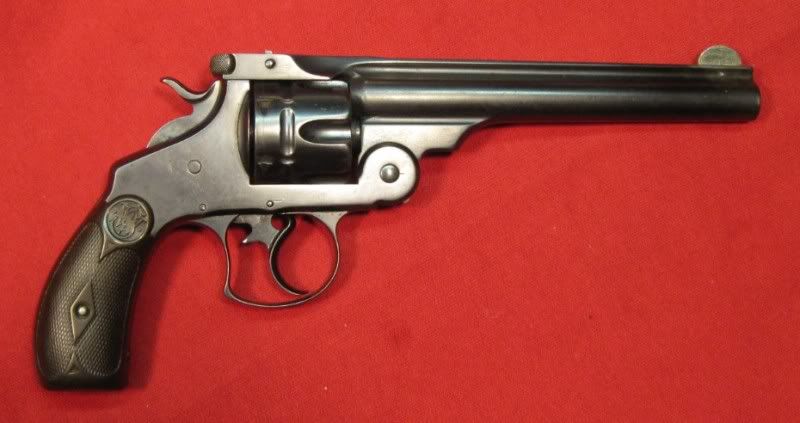
New Model #3 or New Model Number Three was a specific model (with several variations according to caliber). The New Model #3 looked just like the second photo; a single action revolver with a small hump on the back of the grip. This one is nickel plated but they came blued too. It was called the New Model #3 because it was the last and most sophisticated of the #3 frame Top Break revolvers that S&W made.
Remember: #3 only denotes frame size. There were five separate models using the large #3 frame size; the American, Russian, DA 44, Schofield, and New Model #3. A lot of folks get confused about this, thinking that #3 was a specific model. Only New Model #3 was a specific model.
Here is a photo of the American Model, the very first of the Top Break Smith and Wessons. This is the one that fired the 44 S&W American cartridge with the heeled bullet. Without looking it up, I am pretty sure some of these were made chambered for the 44 Henry Rimfire cartridge too. This is also what the 1st Model Russian (Old, Old Model Russian) looked like. Indistinguishable at a glance from the American Model except for chambering and markings. No big hump on the grip and no extra hook at the bottom of the trigger guard.
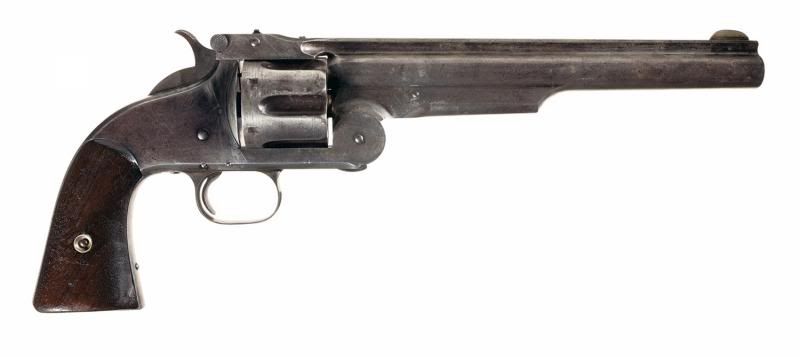
Now, just to confuse you further, I have some reprints of old S&W catalogs, and they do refer to what is obviously the New Model Number Three as the 'Russian' model. But those catalogs are over 100 years old, and the currently accepted model names of the five different guns made on the #3 sized frame, at least according to the Standard Catalog of Smith and Wesson, by Supica and Nahas, were American, Russian, Schofield, 44 Double Action, and New Model Number Three.
Hope I haven't confused you more.
P.S. Since the front sight on my blued 44 DA was not original anyway, I had a smith replace it with an antique dime a few years ago. Same height as the sight that was on it, but more fun.
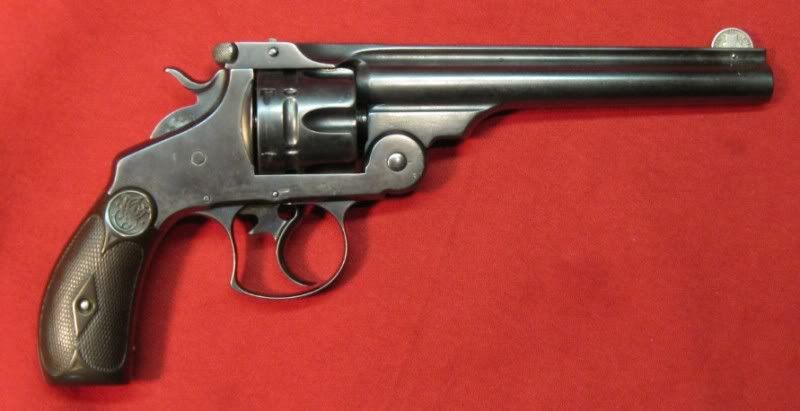
Last edited:

